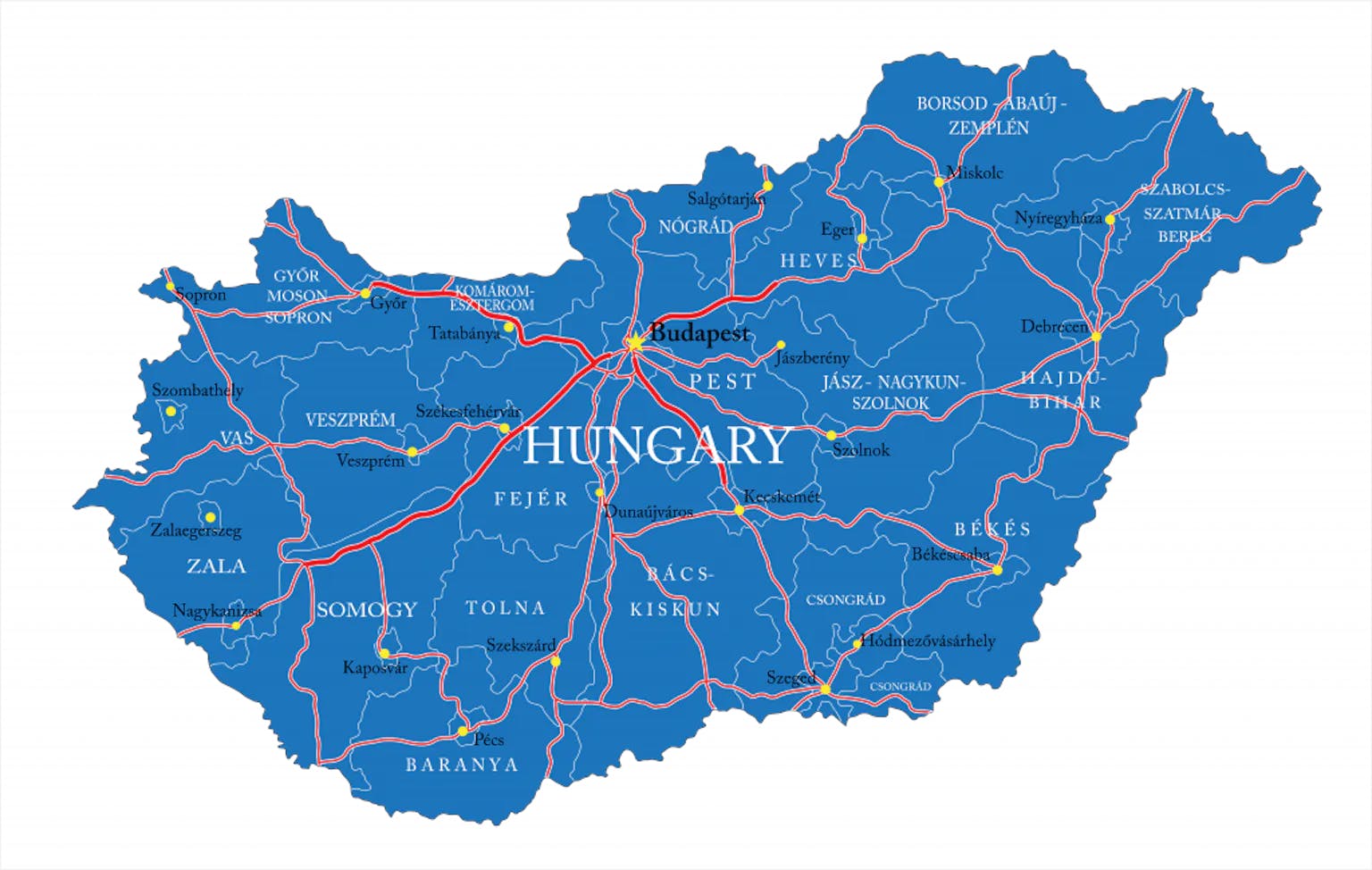Travelling to Hungary by car
There are various ways to travel to Hungary by car, depending on where you are coming from. It is important to check whether your insurance is valid in Hungary and whether you have the right documents, e.g. your driving license and car registration document. It is also recommended to prepare for possible border crossings and to know what traffic rules apply in Hungary. You can read it all on this page!
Paying toll charges in Hungary
There are toll charges in Hungary for using certain motorways and tunnels. These toll charges can be paid at the toll gates or via an electronic system called “e-vignette Hungary”. You can buy an e-vignette on our website.
There are also toll charges for using some bridges and roads, e.g. the Danube bridges in Budapest. These charges can be paid at the toll gates or via an electronic system called "HU-GO".
Travelling to Hungary by car during corona
In Hungary, similar corona measures are in force for car travellers to those in the Netherlands. These measures may change depending on the situation of the virus in the country. Here are a number of measures that are currently in force or were recently in force:
- Temperature screenings: Temperature screenings can take place at border crossings and in some areas. If you have an elevated temperature, you may be refused further travel or placed in quarantine.
- Quarantine: Travelers from certain countries may be required to self-quarantine upon arrival in Hungary. This applies, for example, to travellers from countries with a high number of infections. The Netherlands is not a high-risk country.
- Face masks: It is required to wear a face mask in public areas, such as buses, trams, trains and shops.
- Social distancing: It is required to maintain social distancing of at least 1.5 meters in public areas.
Are there border checks in Hungary?
Yes, there are border checks in Hungary. The Hungarian government maintains controls on its borders. The country is doing this mainly to prevent the further spread of COVID-19 and to regulate the migration of people. There are also special measures for travellers coming from certain countries.
Best routes to Hungary by car
The best route to Hungary by car, depends on your specific place of departure and arrival, as well as your personal preference. Below you will find a general description of a popular route that is used a lot:
- Start from Germany via the A1 or A2.
- Take the A30 to Osnabrück and then the A33 to Bielefeld.
- Take the A2 to Hanover and then the A7 to Kassel.
- Take the A4 to Erfurt and then the A71 to Leipzig.
- Take the A9 to Dresden and then the A4 to Prague.
- Take the E65 to Ostrava and then the E75 to Debrecen.
- Take the E60 to Szeged and then the E68 to Budapest.
Which route do you take through Hungary?
There are various routes you can take through Hungary, depending on your destination and personal preference. Below you will find a general description of a popular route from Budapest to Szeged:
- Leave from Budapest to Szeged. via the M5.
- Take the M43 to Kecskemét.
- Take the M6 to Szeged.
8This route will take you along most big cities worth visiting.
Travelling to Hungary by electric car
Hungary has 0.6 charging points per 100 km. Compared to the Netherlands, that is very little. Our country has 47.5 charging points per 100 km. In Hungary, however, there are many initiatives and projects to increase the number of charging points in Hungary in the coming years. This will greatly facilitate the use of electric vehicles in Hungary.
Mandatory to take with you in the car
In Hungary there are a number of things that must be present in a vehicle, including:
- A valid driving license
- Valid insurance
- Valid MOT certificate
- Valid road tax certificate
- A warning triangle
- A first aid kit
- Reflective vests
- A license plate
- A safety belt
In some areas of Hungary it is also mandatory to have winter tires when the weather is bad.
Refuelling your car in Hungary
In Hungary you can refuel your car at petrol stations that are generally open 24 hours a day. Some petrol stations are only open during the day, so it is wise to check beforehand if a petrol station is open when you refuel your car.
Most petrol stations in Hungary have payment terminals where you can make your payment by credit card or cash. Some petrol stations also accept other payment methods such as mobile payments or prepaid cards.
Fuel prices in Hungary
These were the fuel prices in Hungary on 06-01-2023:
- Petrol Euro 95 (E10): €1.594
- Diesel B7: €1.802
- LPG: €0.974
Important traffic rules in Hungary
In Hungary, there are a number of important traffic rules that you must adhere to, including:
- Driving in the right lane
- Everyone in the car must wear a safety belt
- It is forbidden to make calls or send text messages while driving
- It is forbidden to drive under the influence of alcohol or drugs
- It is mandatory to have a warning triangle and reflective vests in your vehicle
- It is mandatory to have your headlights on while driving
- In case of an accident, you must stop immediately and inform the police
Speed limits in Hungary:
- Within built-up areas: 50 km/h
- Outside built-up areas: 90 km/h
- On motorways: 130 km/h
Road map Hungary

NJ Vignette B.V. is an intermediary and applies for the vignette on your behalf and in your name. NJ Vignette B.V. charges a commission for this.
An agreement is concluded between you and the official authority of the relevant country that issues the vignette, with regard to the vignette requirement.
All prices on our website are including vat.

